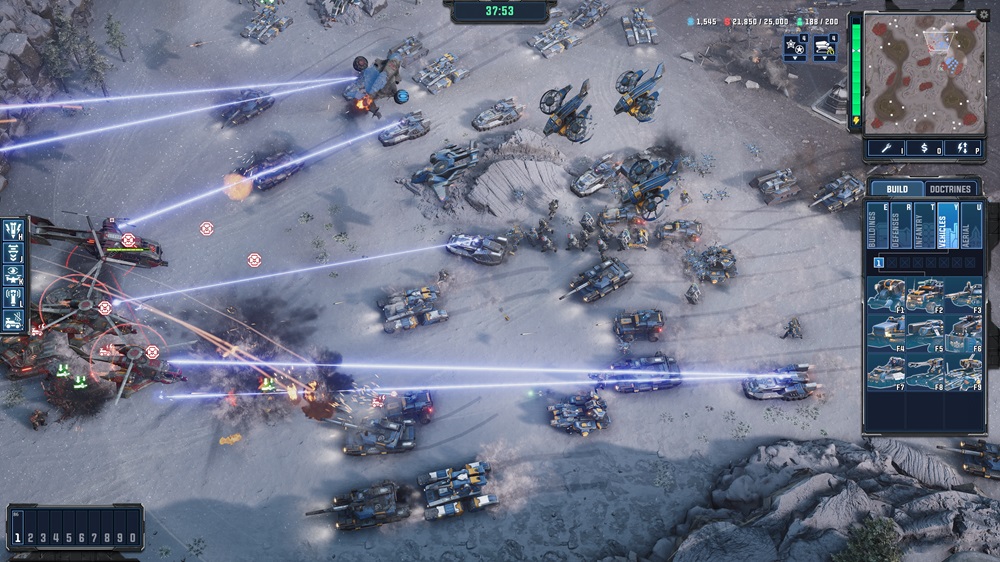I have fond memories of playing Command & Conquer on the original PlayStation, but it was Red Alert that burrowed its claws into me and left so many welcoming scars on my brain. It was easy to get to grips with, but tougher to master, yet I spent hours amassing an army and fighting the good fight. The developers have said that Tempest Rising is “inspired by RTS greats of the 90s and 2000s,” which is 100% true, however, it took me back to by younger years fighting the Soviets and collecting minerals.
While Tempest Rising does remind me a lot of C&C, it is still very much its own game. I got to play a preview where I tried out its Skirmish mode, where I could choose between two factions: the Tempest Dynasty and Global Defense Force. Taking place in an alternate universe where the Cuban Missile Crisis led to World War 3. While the world was left ravaged by the war, a mysterious resource has sprung up from the ground, leading nations to gather and utilise its properties. This sets the scene for an interesting story, but my time with it was solely about the gameplay.

One thing that became abundantly clear after my first game was just how streamlined it feels, and how straightforward it is to get to grips with the controls. Many RTS titles throw the book at you and expects you to pick everything up quickly, giving you no time to familiarise yourself with what is expected of you on your path to success. Both factions play differently, and it mixes up how matches play out when you’re scanning for resources and building your factories, machinery, and military support. You start off with limited construction options, but things quickly pick up.
As the Global Defense Force, I quickly built the Construction Yard that acted as the heart of my base, where everything grew from there. From there I built a Refinery so that I could harvest the Tempest resource, bringing in a source of income so that I could bring more money into my war effort. Everything needs power, so I built multiple Power Plants to keep everything going, then a Silo to store the precious resource I was collecting, and the Barracks gave me the option to unlock infantry like the Field Scout and Engineer.
The Vehicle Bay allowed me to churn out Hunter Tanks for protecting my base and pushing against incoming enemy attacks and Sentinel Scout Cars to observe nearby territories and gather intel. There’s also a range of other structures like the Satellite Uplink and Repair Bay that help keep your production strong while offering support in a multitude of ways from scanning nearby enemies and repairing your damaged vehicles and buildings. While making sure you build everything you need for a successful operation, you can also build walls to protect your base.

You have so much control for how you harvest, how you plan recognisance, how you fight the enemy, and how you ultimately gain control. There are times when enemy tanks and soldiers will hit you unexpectedly, but you also have the option to plan your attacks in the shadows or go in all guns blazing. It’s easy to understand but difficult to master, and it took a fair few tries for me to understand the basics before I was able to fully enjoy what was on offer. While the Tempest Dynasty has similar buildings and weaponry, they do have specialities that aren’t available for GDF (and vice versa), so it’s always fun to play as both factions.
While I didn’t get to try out the campaign or multiplayer, Skirmish gave me an opportunity to get to grips with the different factions and its addictive and straightforward gameplay. It’s refreshing to play an RTS that doesn’t drown you with information yet doesn’t exactly hold your hand either. Tempest Rising is also a great-looking game with a killer soundtrack, and I genuinely can’t wait to jump into the full release. Slipgate Ironworks has managed to craft an enjoyable RTS that reminds me of the good old days of the genre while offering something fresh as well.
Tempest Rising is coming to PC on April 24th.





